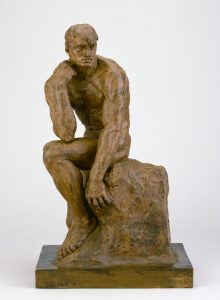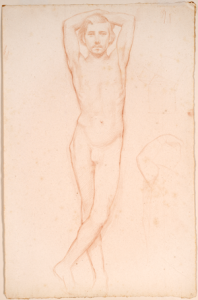STARTS
Dec 16, 2023
Ends
Dec 15, 2024
Free
Gallery P28
Perfecting Form: The Male Nude in the 1800s
Perfecting Form: The Male Nude in the 1800s

In the realm of art, depictions of the male nude are not merely a subject of study; they also offer a glimpse into how artists honed their skills in rendering anatomy, proportion, and the play of light and shadow.
 During their training, European artists drew from live models or followed a long tradition of copying Ancient Greek and Roman sculptures and objects. These representations of idealized, heavily muscled male bodies came to be known as the “classical style,” becoming the pinnacle of artistic practice through the late 1800s. Many of the muscular figures represent power, strength, and moral excellence.
During their training, European artists drew from live models or followed a long tradition of copying Ancient Greek and Roman sculptures and objects. These representations of idealized, heavily muscled male bodies came to be known as the “classical style,” becoming the pinnacle of artistic practice through the late 1800s. Many of the muscular figures represent power, strength, and moral excellence.
After their training, many artists continued these studies in their studios, sometimes in preparation for future paintings or sculptures and at other times as warm-up exercises. Collectors highly value these studies, as they offer a direct window into an artist’s creative process. The sketches and studies within this gallery show us many private moments captured for eternity.
